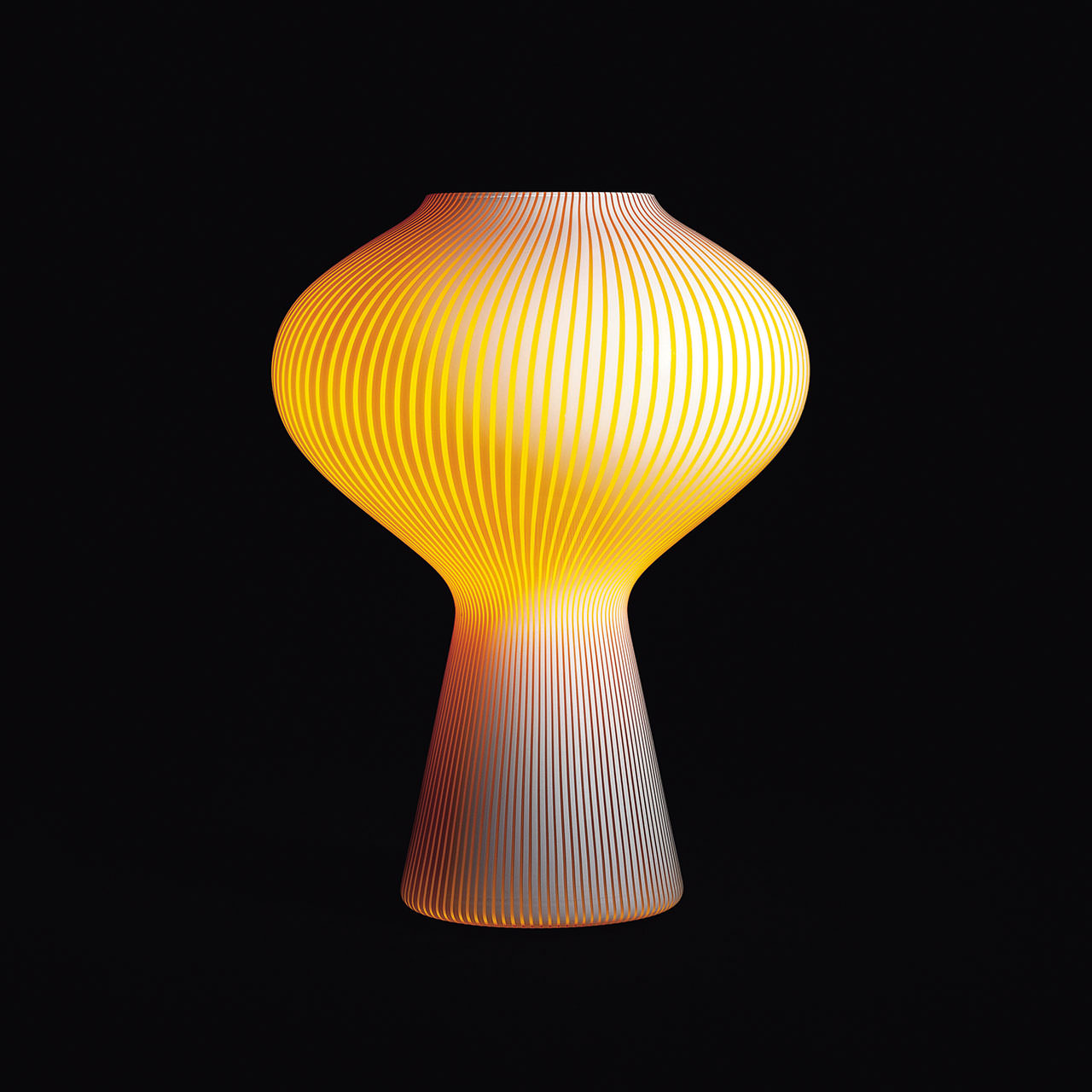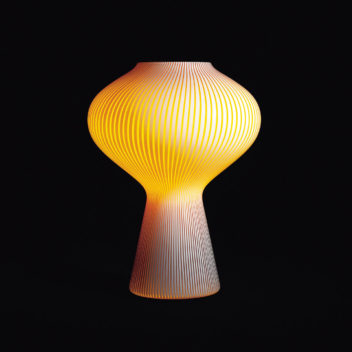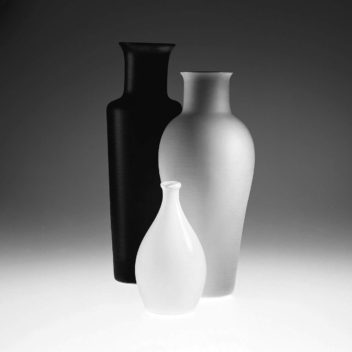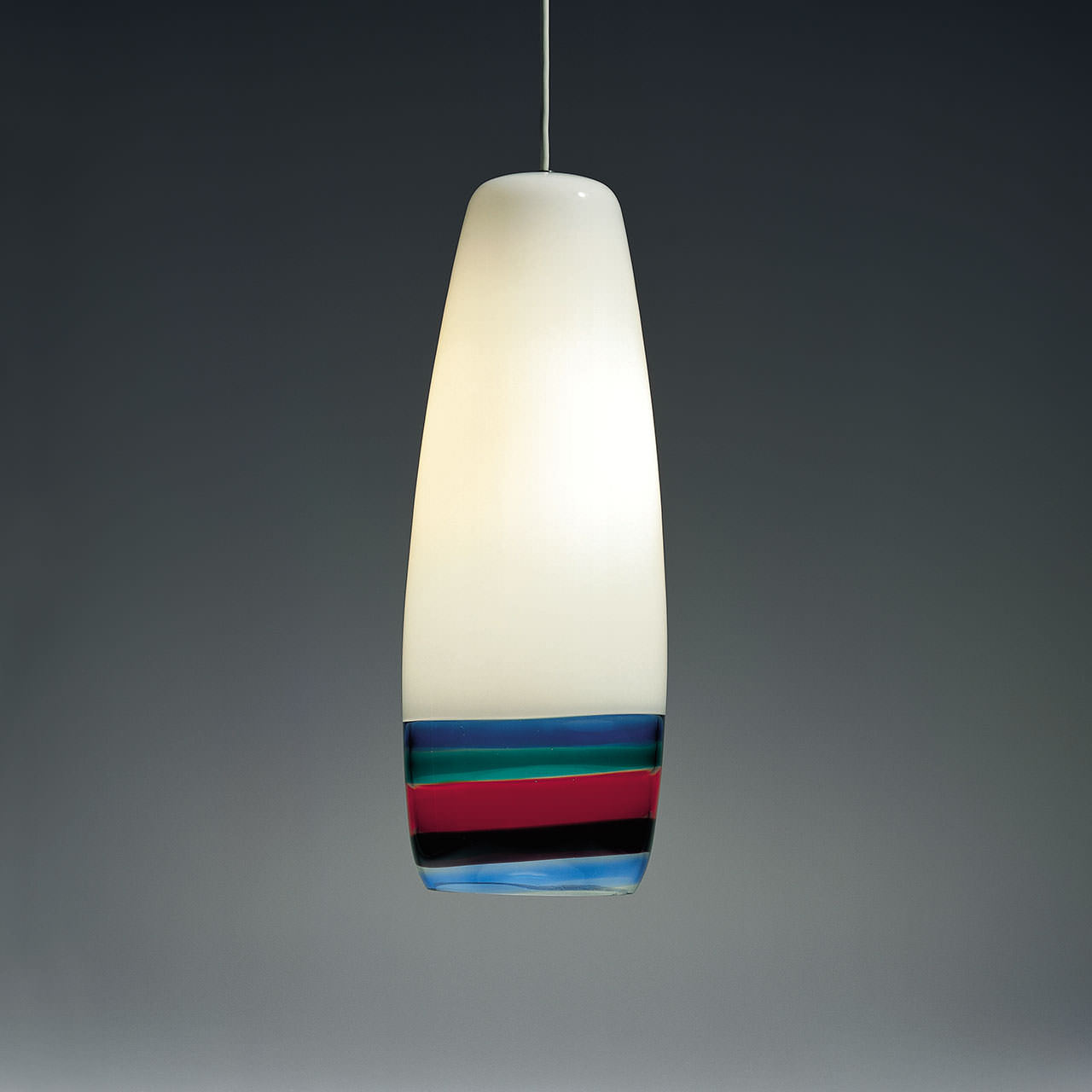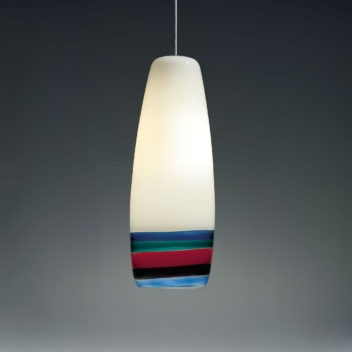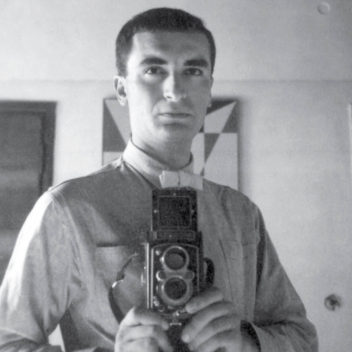
Massimo Vignelli 1931–2014
Massimo Vignelli studied architecture in Milan and Venice. While in Venice as a student, he worked for Venini from 1953 to 1957, designing lighting fixtures, glass windows, drinking glasses, and pitchers. Most of the pieces he designed are today in museum collections, notably the Museum of Modern Art and the Metropolitan Museum of Art in New York, the Musée des Arts Décoratifs in Montreal, Die Neue Sammlung in Munich, and others. A monographic exhibition of the Vignellis’ work toured Europe between 1989 and 1993.
Over the course of his career, Vignelli worked across the field of design, from graphic identity programs to publications, from products in glass, china, silver, and plastic to furniture and interiors. His work has been widely recognized by museums, publications and exhibitions throughout the world. Among Vignelli’s impressive awards are the Gran Premio Triennale di Milano, 1964; Compasso d’Oro, 1964 and 1998; the AIA 1973 Industrial Arts Medal; the Art Directors Club 1982 Hall of Fame; the 1983 AIGA Gold Medal; the first Presidential Design Award; the Interior Design Hall of Fame, 1988; the National Arts Club Gold Medal for Design, 1991; the Interior Product Designers Fellowship of Excellence, 1992; and the Brooklyn Museum Design Award for Lifetime Achievement, 1995. He was awarded an Honorary Doctorate in Architecture from the University of Venice, Italy, and Honorary Doctorates in Fine Arts from Parsons School of Design, Pratt Institute, Rhode Island School of Design, and Corcoran School of Art. In 1996 he received the Honorary Royal Designer for Industry Award from the Royal Society of Arts, London.
